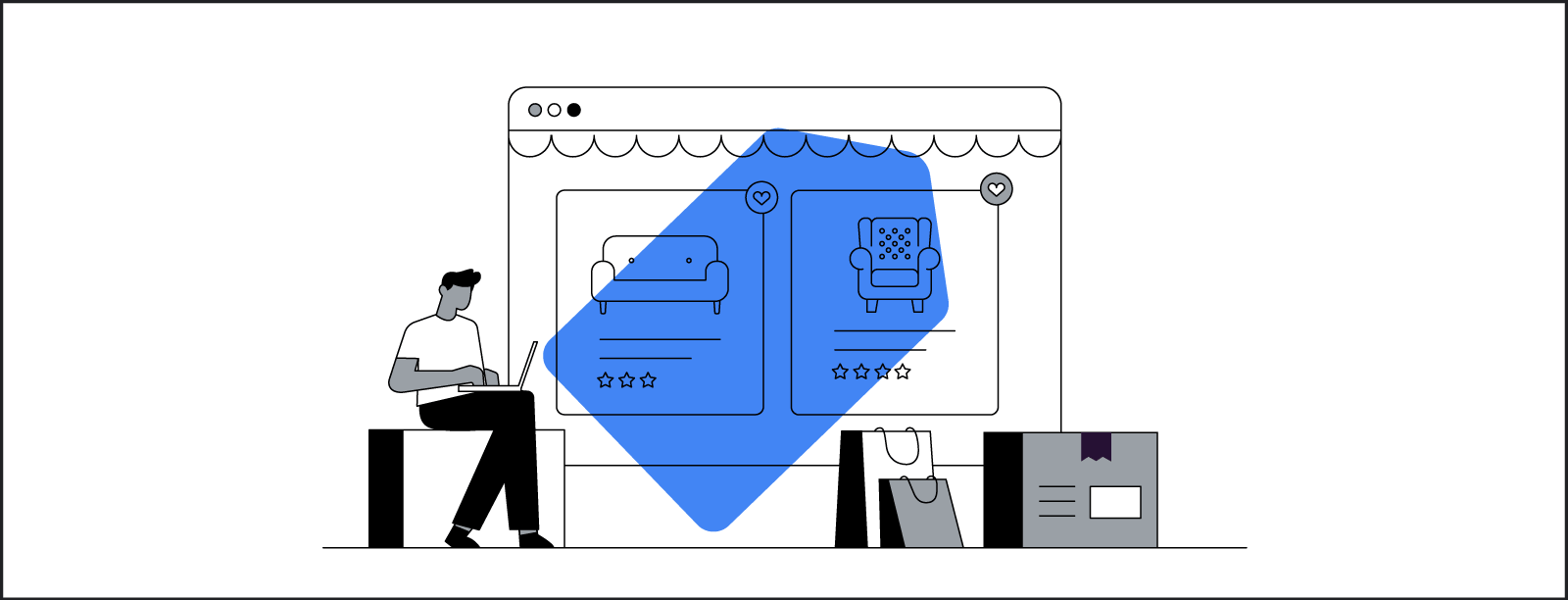The past year’s disruptions were unparalleled and unexpected, driving lightning-fast pivots in strategy and execution to meet customers where and how they wanted to shop. Organizations had to accelerate digital transformation initiatives to survive, allowing them to bypass former barriers and reach long-term goals much sooner than expected. At Crate and Barrel, where online sales already accounted for more than half of our business, we’ve seen online sales jump more than 40% since the start of the pandemic. Currently, they make up more than 65% of our overall business.
As we look ahead, we see an even bigger revolution on the horizon, one marked by digital and physical engagement fused together to form an entirely seamless and highly personalized e-commerce experience. This is made possible by our use of data analytics technology, which offers more personalized, immersive experiences for our customers, with embedded machine learning to help our company navigate this dynamic retail world.
The distinctions between online and offline experiences are increasingly blurring. For example, curbside pickups of digital sales are one way the store and online experiences are connected. Similarly, our physical shopping catalogs have become more personalized, thanks to rich online customer data that allows us to customize direct mailers for different target consumer groups.
Still, customer interaction in each domain is different. Physical stores offer more inspirational experiences, inviting shoppers to come in and explore, spontaneously discover and physically interact with products, and imagine design possibilities for their own homes. Digital retail, on the other hand, is generally more personalized and guided, though it currently lacks the tactile discovery that gives life to in-person shopping trips.
This speaks to one of the most significant challenges retailers have when crafting a digital customer experience: bridging the gap between browsing a website and walking through a physical store. It’s been a constant evolution as technology and capabilities have changed. Early websites tried to replicate the store experience by using search to help people find products, categories to guide discovery, and navigation to direct visitors to specific pages. And while website design has been aesthetically modernized and new customer engagement features are constantly being introduced, the structure itself has remained relatively unchanged.
As external influences and new technologies come into play, companies should take advantage of the opportunity to completely reimagine the digital customer experience. Joining the inspirational nature and knowledge of physical retail with the richness and personalization of online retail is the future of online shopping.
Cloud technology powers the revolution of seamless retail experiences
We are at the start of a new era of retail experiences that go beyond using digital to simply reinforce physical experiences. Instead, the new focus will be on maximizing design and data to construct more inventive, creative, and inspirational experiences, both online and offline, and finding ways to bring the best of both together.
A big part of this digital shopping revolution is being powered by cloud computing. The cloud makes it easier to gather and analyze large amounts of data from diverse sources, like customer traffic information in a physical store, mobile shopping patterns, and other online purchasing behaviors, all in an effort to help us better understand customer pain points and how we can remove friction to continuously improve the modern shopping experience.
The speed and flexibility of the cloud, particularly when breaking down traditional data silos, is a clear advantage. To achieve a rich, personalized customer experience, it’s critical that organizations gather the right data in real time from their various touchpoints and then create a single data source that represents a full view of the customer.
At Crate and Barrel, we rely heavily on Google Cloud’s BigQuery data warehousing and analysis tool to save time preparing data sources. Thanks to its ease of use, we draw on 10X more information sources compared to a few years ago, which are then analyzed and transformed into actionable insights that can be used to influence the customer’s next interaction. And this, in turn, drives revenue. In addition, BigQuery’s machine-learning capabilities enable us to develop more models and recommendations at scale without raising costs or overloading resources.
For instance, by mining omnichannel data about our customers’ shopping habits, we successfully shifted direct mail investment into personalized digital advertising with little friction and double-digit incremental returns. Digital ads allow us to gain rich insights about current and prospective customers that we can leverage to refine messaging strategies and drive omnichannel customer relationship management. We have created a complete view of our customers using online and offline data to constantly improve the customer journey at key interaction points, weaving throughout digital as well as offline experiences.
The data synergies across Google platforms have allowed us to better use contextual data to optimize and improve our ad effectiveness as we continue to scale our investments, which helped us double our return on ad spend while increasing our investment by 20%.
What’s coming next?
The future of shopping places more emphasis on technology teams, as well as designers and marketers, to innovate at a pace faster than today’s modern consumer. Fortunately, moving data among different repositories in different clouds or deploying data analytics technology enables teams to be nimble and react quickly.
Beyond marketing, we’ve already started using BigQuery to reveal more customer insights and opportunities for improvement throughout the ordering process. Whether it’s at product origination or last-mile delivery, we are striving to create transparency and frictionless experiences throughout the product life cycle. How organizations use data to augment both digital and physical business operations is set to transform all industries, not just retail. We have an opportunity to create a strategic advantage in our customer experience — and it all starts with data.
- While ConnectAmericas strives to make the information published from third parties authors as timely and accurate as possible, the site makes no claims, promises, or guarantees about the accuracy, completeness, or adequacy of the contents and expressly disclaims liability for errors and omissions in the contents of these publications. No warranty of any kind, implied, expressed, or statutory, including but not limited to the warranties of non-infringement of third party rights, title, merchantability, fitness for a particular purpose or freedom from computer virus, is given concerning the contents of this website from third parties or its links to other Internet resources.
- Reference in this site to any specific commercial product, process, or service, or the use of any trade, firm or corporation name is for the information and convenience of the public, and does not constitute endorsement, recommendation, or favoring by ConnectAmericas.



Follow Us